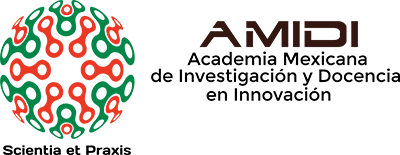Traditional Knowledge Management Bibliometric Review
DOI:
https://doi.org/10.55965/setp.1.01.a4Keywords:
traditional knowledge, management, sustainability, social value creation, resilienceAbstract
Purpose. The first document dates from 1980, it reappears in 1993, in 2000 it increases significantly. Out of 2,813 researchers, Berker, Turner and Tëngo stand out. The largest citation and production is from India and the United States. It is concluded that it is necessary to know the degree to which the traditional knowledge of the populations is legitimized by describing and evaluating it for the creation of alternatives, as well as the degree to which populations, institutions or organizations combine local experience and science.
Methodology. The traditional Knowledge Management search in Scopus using VosViewer software, generated 941 documents, 78% articles, 8% reviews and 6.8% book chapters. In Social Sciences 22.9%, Environmental Sciences 20.1% and Agricultural and Biological Sciences 15.8%.
Findings and originality. It is necessary to know how the integration of traditional knowledge in science and technology affects indicators of sustainability, resilience, common welfare, creation of social value and other variables related to social and environmental ecosystems.
Downloads
References
-Araújo Ruiz, J. A., & Arencibia Jorge, R. (2002). Informetría, bibliometría y cienciometría: aspectos teórico-prácticos. Acimed, 10(4), 5–6.
-Bartlett, C., Marshall, M., & Marshall, A. (2012). Two-Eyed Seeing and other lessons learned within a co-learning journey of bringing together indigenous and mainstream knowledges and ways of knowing. Journal of Environmental Studies and Sciences, 2(4),
–340. https://doi.org/10.1007/s13412-012-0086-8 DOI: https://doi.org/10.1007/s13412-012-0086-8
-Berkes, F., & Turner, N. J. (2006). Knowledge, learning and the evolution of conservation practice for social-ecological system resilience. Human Ecology, 34(4), 479–494. https://doi.org/10.1007/s10745-006-9008-2 DOI: https://doi.org/10.1007/s10745-006-9008-2
-Bohensky, E. L., & Maru, Y. (2011). Indigenous knowledge, science, and resilience: What have we learned from a decade of international literature on “integration”? Ecology and Society, 16(4). https://doi.org/10.5751/ES-04342-160406 DOI: https://doi.org/10.5751/ES-04342-160406
-Brokensha, D. W., Warren, D. M., & Werner, O. (1980). Indigenous knowledge systems and development. In Indigenous knowledge systems and development.
-Cerchione, R., & Esposito, E. (2017). Using knowledge management systems: A taxonomy of SME strategies. International Journal of Information Management, 37(1), 1551–1562. https://doi.org/10.1016/j.ijinfomgt.2016.10.007 DOI: https://doi.org/10.1016/j.ijinfomgt.2016.10.007
-Cruikshank, J. (2001). Glaciers and climate change: Perspectives from oral tradition. Arctic,
(4), 377–393.https://doi.org/10.14430/arctic795 DOI: https://doi.org/10.14430/arctic795
-Dávila Rodríguez, M., Guzmán Sáenz, R., Macareno Arroyo, H., Piñeres Herera, D., De la Rosa Barranco, D., & Caballero-Uribe, C. V. (2009). Bibliometría: conceptos y utilidades para el estudio médico y la formación profesional. Revista Salud Uninort, 25(2), 319–330.
-Fernandez-Gimenez, M. E. (2000). The role of Mongolian nomadic pastoralists’ ecological knowledge in rangeland management. Ecological Applications, 10(5), 1318–1326. DOI: https://doi.org/10.1890/1051-0761(2000)010[1318:TROMNP]2.0.CO;2
-Corbera, E., & Reyes-García, V. (2013). Traditional ecological knowledge and global environmental change: Research findings and policy implications. Ecology and Society, 18(4). https://doi.org/10.5751/ES-06288-180472 DOI: https://doi.org/10.5751/ES-06288-180472
-Leonard, S., Parsons, M., Olawsky, K., & Kofod, F. (2013). The role of culture and traditional knowledge in climate change adaptation: Insights from East Kimberley, Australia. Global Environmental Change, 23(3), 623–632. https://doi.org/10.1016/j.gloenvcha.2013.02.012 DOI: https://doi.org/10.1016/j.gloenvcha.2013.02.012
-Maroyi, A. (2013). Traditional use of medicinal plants in south-central Zimbabwe: Review and perspectives. Journal of Ethnobiology and Ethnomedicine, 9(1). https://doi.org/10.1186/1746-4269-9-31 DOI: https://doi.org/10.1186/1746-4269-9-31
-Muthu, C., Ayyanar, M., Raja, N., & Ignacimuthu, S. (2006). Medicinal plants used by traditional healers in Kancheepuram District of Tamil Nadu, India. Journal of Ethnobiology and Ethnomedicine, 2. https://doi.org/10.1186/1746-4269-2-43 DOI: https://doi.org/10.1186/1746-4269-2-43
-Nazarea, V. D. (2006). Local knowledge and memory in biodiversity conservation. In Annual Review of Anthropology (Vol. 35).
https://doi.org/10.1146/annurev.anthro.35.081705.123252 DOI: https://doi.org/10.1146/annurev.anthro.35.081705.123252
-Orlove, B., Roncoli, C., Kabugo, M., & Majugu, A. (2010). Indigenous climate knowledge in southern Uganda: The multiple components of a dynamic regional system. Climatic Change, 100(2), 243–265. https://doi.org/10.1007/s10584-009-9586-2 DOI: https://doi.org/10.1007/s10584-009-9586-2
-Pérez-Matos, N. E. (2002). La bibliografía, bibliometría y las ciencias afines. Acimed, 10(3), 1-2.
-Pierotti, R., & Wildcat, D. (2000). Traditional ecological knowledge: The third alternative (commentary). Ecological Applications, 10(5), 1333–1340.. https://doi.org/10.1890/1051-0761(2000)010[1333:TEKTTA]2.0.CO;2 DOI: https://doi.org/10.1890/1051-0761(2000)010[1333:TEKTTA]2.0.CO;2
-Rialp, A., Merigó, J. M., Cancino, C. A., & Urbano, D. (2019). Veinticinco años (1992-2016) de la revista internacional de negocios: una visión general bibliométrica. International Business Review, 28(6). DOI: https://doi.org/10.1016/j.ibusrev.2019.101587
-Salmón, E. (2000). Kincentric ecology: Indigenous perceptions of the human-nature relationship. Ecological Applications, 10(5), 1327–1332. https://doi.org/10.1890/1051-0761(2000)010[1327:KEIPOT]2.0.CO;2 DOI: https://doi.org/10.1890/1051-0761(2000)010[1327:KEIPOT]2.0.CO;2
-Stevenson, M. G. (1996). Indigenous knowledge in environmental assessment. Arctic, 49(3), 278–291. https://doi.org/10.14430/arctic1203 DOI: https://doi.org/10.14430/arctic1203
-Tengö, M., Brondizio, E. S., Elmqvist, T., Malmer, P., & Spierenburg, M. (2014). Connecting diverse knowledge systems for enhanced ecosystem governance: The multiple evidence base approach. Ambio, 43(5), 579–591. https://doi.org/10.1007/s13280-014-0501-3 DOI: https://doi.org/10.1007/s13280-014-0501-3
-Turner, N. J., Gregory, R., Brooks, C., Failing, L., & Satterfield, T. (2008). From invisibility to transparency: Identifying the implications. Ecology and Society, 13(2). https://doi.org/10.5751/ES-02405-130207 DOI: https://doi.org/10.5751/ES-02405-130207
-Urbizagastegui, R. (2016). La bibliometría, informetría, cienciometría y otras “metrías” en el Brasil. Encontros Bibli: Revista Eletrônica de Biblioteconomia e Ciência Da Informação, 21(47), 51–66. DOI: https://doi.org/10.5007/1518-2924.2016v21n47p51
-Vitón Castillo, A. A. (2018). A propósito del artículo “Ciencia a la medida. Estudios bibliométricos y cienciométricos en una nueva sección.” Revista Habanera de Ciencias Médicas, 17(5), 847–848.
-Waltman, L., Van Eck, N. J., & Noyons, E. C. (2010). A unified approach to mapping and clustering of bibliometric networks. Journal of Informetrics, 4(4), 629–635. DOI: https://doi.org/10.1016/j.joi.2010.07.002
Published
How to Cite
Issue
Section
License
Copyright (c) 2021 Pascuala Josefina Cárdenas-Salazar

This work is licensed under a Creative Commons Attribution-NonCommercial 4.0 International License.











